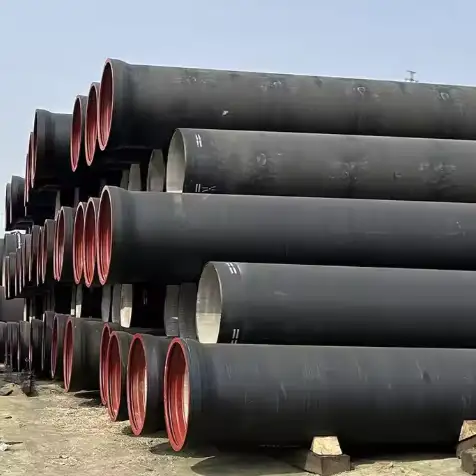Welding ductile iron castings requires specialized techniques to overcome challenges like cracking, porosity, and residual stresses. Unlike other metals, ductile iron’s unique graphite structure demands careful preheating, proper filler metal selection, and controlled cooling to ensure strong, crack-free welds. This guide explores the best practices for welding ductile iron, including shielded metal arc welding (SMAW), gas tungsten arc welding (GTAW), and oxy-acetylene methods.

Understanding the Challenges of Welding Ductile Iron
Welding ductile iron presents unique challenges due to its composition and microstructure. The presence of graphite nodules can lead to issues such as:
-
Cracking: Rapid cooling can cause thermal stresses, leading to cracks.
-
Porosity: Trapped gases during solidification can create voids.
-
Inadequate Fusion: Improper heat input may result in weak welds.
To mitigate these challenges, proper welding procedures, including preheating and controlled cooling, are essential.
Pre-Welding Preparation
1. Cleaning the Workpiece
Before welding, it’s crucial to remove any contaminants such as oil, grease, rust, and scale from the surface of the ductile iron. This can be achieved through methods like wire brushing, grinding, or using chemical cleaners.
2. Preheating
Preheating the workpiece helps reduce thermal gradients and minimizes the risk of cracking. A typical preheat temperature ranges from 500°F to 1200°F (260°C to 650°C), depending on the thickness and composition of the material .
3. Joint Design
Proper joint preparation is vital for a successful weld. Creating a “V” or “U” shaped groove can facilitate better fusion and penetration. Additionally, ensuring proper fit-up and alignment of the parts is essential.
Welding Techniques for Ductile Iron
1. Shielded Metal Arc Welding (SMAW)
SMAW, commonly known as stick welding, is widely used for welding ductile iron. It involves using a consumable electrode coated with flux to create an arc between the electrode and the workpiece. This process provides good control over heat input and is suitable for field repairs.
2. Gas Metal Arc Welding (GMAW)
Also known as MIG welding, GMAW utilizes a continuous wire feed and shielding gas to create the weld. This method offers high deposition rates and is suitable for thin-walled sections. However, it requires clean surfaces and precise control to prevent defects.
3. Gas Tungsten Arc Welding (GTAW)
TIG welding provides excellent control over heat input and produces high-quality welds. It’s ideal for applications requiring precision and minimal distortion. However, it is slower and more labor-intensive compared to other methods.
Post-Welding Heat Treatment
After welding, controlled cooling is necessary to relieve residual stresses and prevent cracking. This can be achieved through post-weld heat treatment (PWHT), which involves:
-
Slow Cooling: Allowing the workpiece to cool gradually in a controlled environment.
-
Stress Relieving: Heating the workpiece to a specific temperature to reduce internal stresses.
-
Annealing: Heating and then slowly cooling the workpiece to soften the material and improve ductility.
The specific heat treatment parameters depend on the material’s composition and the application’s requirements.
Common Welding Defects and Troubleshooting
Several defects can occur during the welding of ductile iron, including:
-
Cracking: Occurs due to rapid cooling or improper heat input.
-
Porosity: Caused by trapped gases during solidification.
-
Inadequate Fusion: Results from insufficient heat or improper technique.
To address these issues, it’s essential to follow proper welding procedures, including preheating, using appropriate filler materials, and controlling heat input.
Comparison of Welding Methods
| Welding Method | Advantages | Disadvantages |
|---|---|---|
| SMAW | Versatile, portable, cost-effective | Slower, requires skill |
| GMAW | High deposition rates, clean welds | Sensitive to contamination |
| GTAW | Precise, high-quality welds | Slow, requires skill and equipment |
Frequently Asked Questions (FAQs)
1. What is the best welding method for ductile iron?
The choice of welding method depends on the specific application and requirements. SMAW is commonly used due to its versatility and cost-effectiveness. GMAW and GTAW offer higher quality welds but may require more control and equipment.
2. How do I prevent cracking when welding ductile iron?
To prevent cracking, it’s crucial to preheat the workpiece to the appropriate temperature, use the correct filler material, and control the cooling rate after welding.
3. Can ductile iron be welded to steel?
Yes, ductile iron can be welded to steel using appropriate filler materials and welding techniques. Preheating and post-weld heat treatment are essential to ensure a strong bond and prevent defects.
4. What filler material should be used for welding ductile iron?
Nickel-based electrodes, such as 99% nickel or 55% nickel, are commonly used for welding ductile iron due to their compatibility and strength.
5. How do I perform post-weld heat treatment on ductile iron?
Post-weld heat treatment involves gradually cooling the workpiece in a controlled environment to relieve residual stresses and prevent cracking. The specific parameters depend on the material’s composition and the application’s requirements.
6. What are the common defects in ductile iron welds?
Common defects include cracking, porosity, and inadequate fusion. These can be mitigated by following proper welding procedures, including preheating, using appropriate filler materials, and controlling heat input.
Conclusion
Welding ductile iron requires careful consideration of various factors, including material composition, welding techniques, and post-weld treatment. By understanding the challenges and following proper procedures, high-quality and durable welds can be achieved.
For a visual demonstration of welding ductile iron, refer to the following video:

